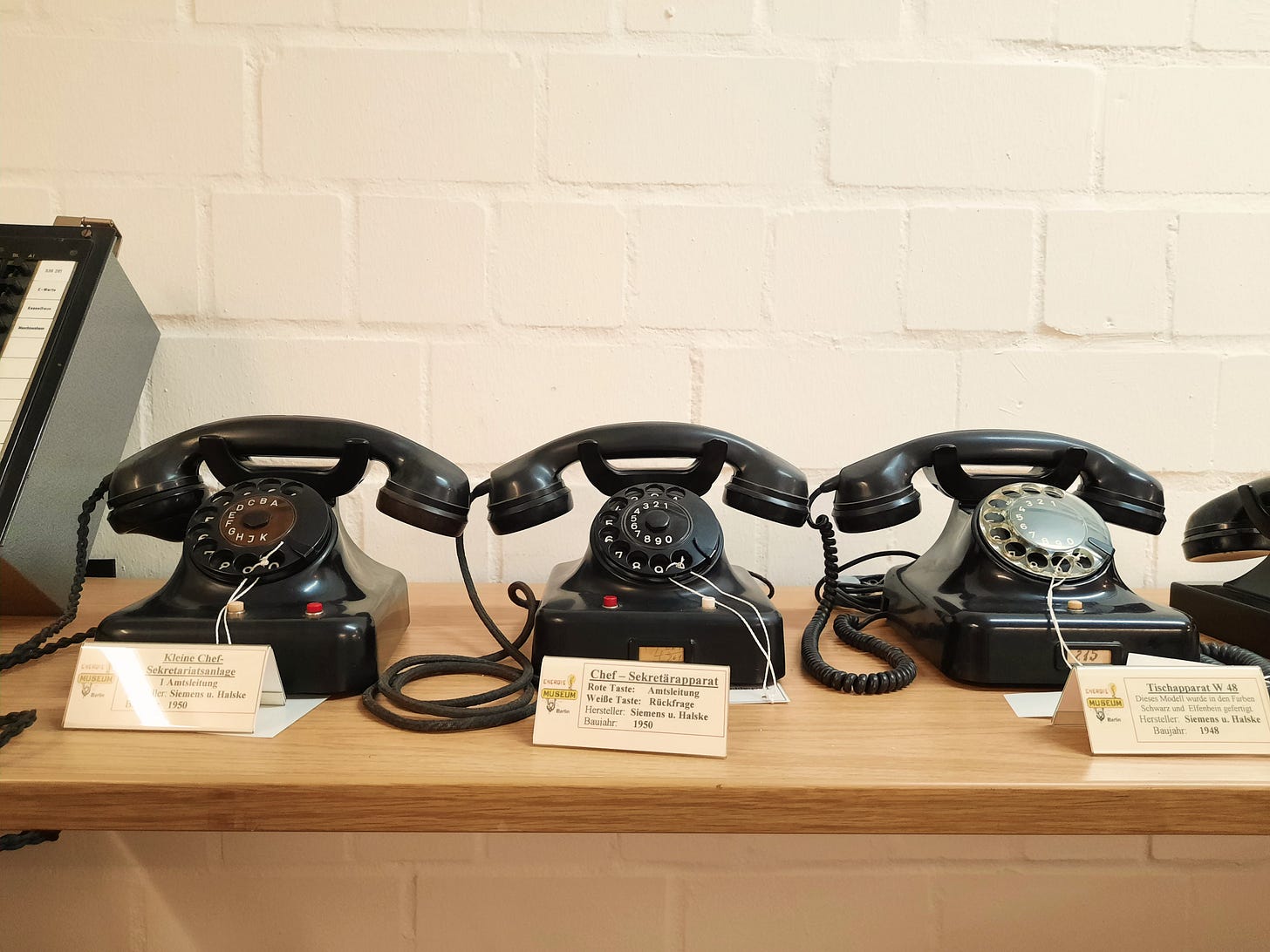Calling Fräulein Nulpe or The Story of Berlin’s First Speaking Clock
Some of you might be old enough to remember the drill: you picked up the relatively heavy Bakelite receiver, inserted your finger in one of the holes in the round dial and rotated it until a soft click could be heard. Then you pulled your finger out of the opening, let the dial rotate back to the starting position and repeated the moves until the complete number you were trying to reach was dialled. With each round hole in the rotary dial standing for one digit, the longer the number, the bigger the number of the full cycle-runs: dial, click, let go, repeat.

The excitement of hearing the distant clicking sound of the lines being connected, the ringing signal informing you the connection was made, followed by the uncertainty of whether someone picks up the receiver at the opposite end. If you were a child in the early 1980s Poland, the chances were you were calling one of the two numbers: the fairy-tale service (you could dial 928 to listen to recordings of children’s stories read by a pleasantly mellow voice) or the speaking clock. The latter could be reached by dialling 926 and was, just as in Germany, one of the most often used telephone numbers in history.
But in the 1980s Berlin the situation was slightly more complicated: the telephone network in the divided city had been, just like in the rest of the country, split in two. To reach the speaking clock service, East Berlin and West Berlin used two different numbers. To hear what the atom-clock in Braunschweig said about the current time, West Berliners called 119, while East Berliners dialled 019 to find out how late it was on their side of the Berlin Wall.
It was a far cry from the single, coherent system launched in the late summer of mid-1930s.
Keep reading with a 7-day free trial
Subscribe to Kreuzberged: Berlin Companion to keep reading this post and get 7 days of free access to the full post archives.

